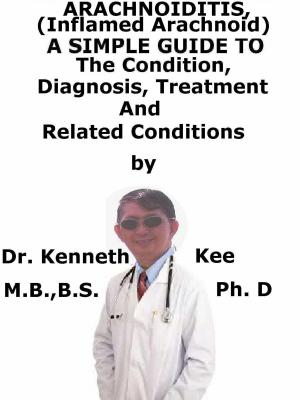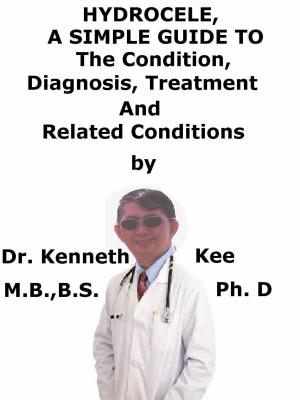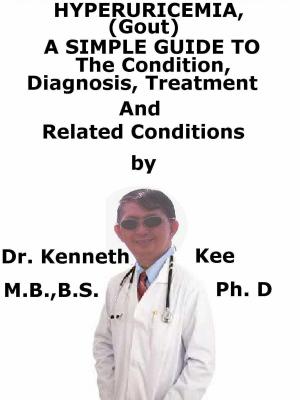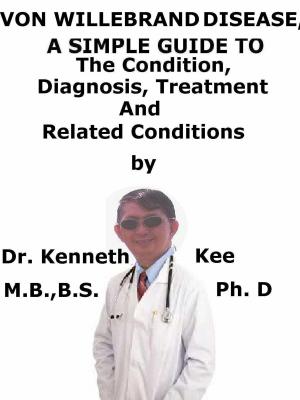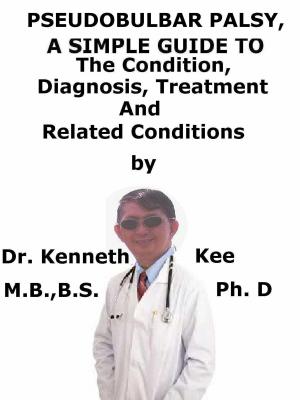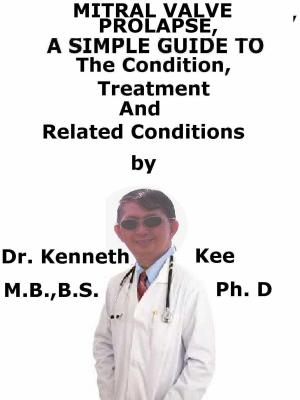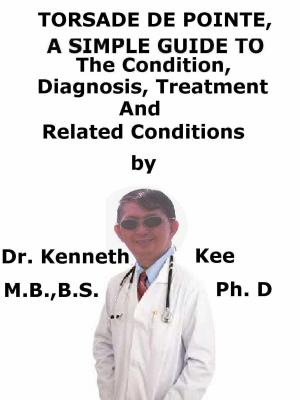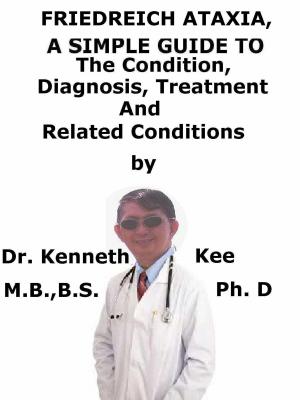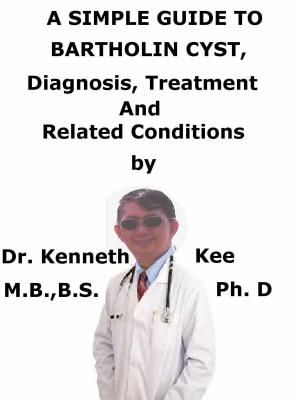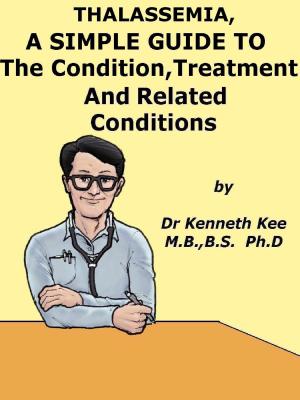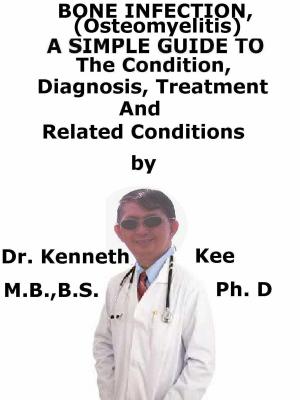A Simple Guide To Somnambulism (Sleep Walking), Diagnosis, Treatment And Related Conditions
Nonfiction, Health & Well Being, Medical, Specialties, Internal Medicine, Neurology, Health| Author: | Kenneth Kee | ISBN: | 9781386644026 |
| Publisher: | Kenneth Kee | Publication: | June 6, 2018 |
| Imprint: | Language: | English |
| Author: | Kenneth Kee |
| ISBN: | 9781386644026 |
| Publisher: | Kenneth Kee |
| Publication: | June 6, 2018 |
| Imprint: | |
| Language: | English |
Sleepwalking (somnambulism) is a medical sleep disorder that happens when people walk or do other activity while still asleep.
Sleepwalking, formally called somnambulism, is a sleep behavior disorder that starts during deep sleep and leads to walking or doing other complicated behaviors while asleep.
It happens much more frequently in children than adults and tends more to happen if a person is deprived of sleep.
Normally, the sleepwalker's eyes are open with a glassy look that seems to look through a person as he or she moves around the house.
Talking nonsensically may follow this sleepwalking.
If a person asks him or her questions, he or she will be slow to react or not react at all.
It normally happens in middle childhood and adolescence but can continue into adulthood.
There is a genetic tendency.
What is the cause of Sleepwalking?
Causes
The normal sleep cycle has stages, from light drowsiness to deep sleep.
Stage 1, 2 and 3 are defined as non-REM (rapid eye movement) sleep.
During the last stage 4 called rapid eye movement (REM) sleep, the eyes move quickly and vivid dreaming is most frequent.
During the night, there will be several cycles of non-REM and REM sleep.
Sleepwalking most often happens in the first and second cycle during deep non-REM sleep (stage 3 or stage 4 sleep) early in the night.
It can happen during REM sleep near morning.
It is not normally observed during naps.
The person is not aware and does not remember his or her behavior.
Sleepwalking (somnambulism) most often happens during deep, non-REM sleep (called N3 sleep) early in the night.
Sleepwalking is when someone walks or carries out complex activities while not fully awake.
It normally occurs during a period of deep sleep.
This is at its height during the early part of the night, so it tends to occur in the first few hours after falling asleep.
Each night, people go through several cycles of non-REM and REM sleep.
In rapid eye movement (REM) sleep, the eyes move rapidly and vivid dreaming is most frequent.
Some episodes of sleepwalking may affect the person who will be just sitting up in bed and looking around, briefly appearing confused, while in others the person may get out of bed and walk about, open cupboards, get dressed or eat, and may seem excited.
In extreme cases, the person may walk out of the house and carry out complicated activities, such as driving a car.
While sleepwalking, the eyes are normally open, though the person will look straight through people and not recognize them.
They can often maneuver well around familiar objects.
If a person would talk to a person who is sleepwalking, they may partially respond or say things that do not make sense.
The sleepwalking episodes are seldom more than 10 minutes, but can be longer.
At the end of each episode, the person may awaken or return to bed and go back to sleep.
They will not normally have any memory of it in the morning or have patchy memory.
If woken while sleepwalking, the person may feel confused and not remember what happened.
The best thing to do if a person sees someone sleepwalking is to make sure they are safe.
Gently guide them back to bed by giving them reassurance.
If not disturbed, they will often return to sleep again.
Sometimes, gently waking the person after they have fully come out of the episode, before putting them back to sleep, will prevent another episode occurring from the same deep sleep cycle.
Sleepwalking (somnambulism) is a medical sleep disorder that happens when people walk or do other activity while still asleep.
Sleepwalking, formally called somnambulism, is a sleep behavior disorder that starts during deep sleep and leads to walking or doing other complicated behaviors while asleep.
It happens much more frequently in children than adults and tends more to happen if a person is deprived of sleep.
Normally, the sleepwalker's eyes are open with a glassy look that seems to look through a person as he or she moves around the house.
Talking nonsensically may follow this sleepwalking.
If a person asks him or her questions, he or she will be slow to react or not react at all.
It normally happens in middle childhood and adolescence but can continue into adulthood.
There is a genetic tendency.
What is the cause of Sleepwalking?
Causes
The normal sleep cycle has stages, from light drowsiness to deep sleep.
Stage 1, 2 and 3 are defined as non-REM (rapid eye movement) sleep.
During the last stage 4 called rapid eye movement (REM) sleep, the eyes move quickly and vivid dreaming is most frequent.
During the night, there will be several cycles of non-REM and REM sleep.
Sleepwalking most often happens in the first and second cycle during deep non-REM sleep (stage 3 or stage 4 sleep) early in the night.
It can happen during REM sleep near morning.
It is not normally observed during naps.
The person is not aware and does not remember his or her behavior.
Sleepwalking (somnambulism) most often happens during deep, non-REM sleep (called N3 sleep) early in the night.
Sleepwalking is when someone walks or carries out complex activities while not fully awake.
It normally occurs during a period of deep sleep.
This is at its height during the early part of the night, so it tends to occur in the first few hours after falling asleep.
Each night, people go through several cycles of non-REM and REM sleep.
In rapid eye movement (REM) sleep, the eyes move rapidly and vivid dreaming is most frequent.
Some episodes of sleepwalking may affect the person who will be just sitting up in bed and looking around, briefly appearing confused, while in others the person may get out of bed and walk about, open cupboards, get dressed or eat, and may seem excited.
In extreme cases, the person may walk out of the house and carry out complicated activities, such as driving a car.
While sleepwalking, the eyes are normally open, though the person will look straight through people and not recognize them.
They can often maneuver well around familiar objects.
If a person would talk to a person who is sleepwalking, they may partially respond or say things that do not make sense.
The sleepwalking episodes are seldom more than 10 minutes, but can be longer.
At the end of each episode, the person may awaken or return to bed and go back to sleep.
They will not normally have any memory of it in the morning or have patchy memory.
If woken while sleepwalking, the person may feel confused and not remember what happened.
The best thing to do if a person sees someone sleepwalking is to make sure they are safe.
Gently guide them back to bed by giving them reassurance.
If not disturbed, they will often return to sleep again.
Sometimes, gently waking the person after they have fully come out of the episode, before putting them back to sleep, will prevent another episode occurring from the same deep sleep cycle.

